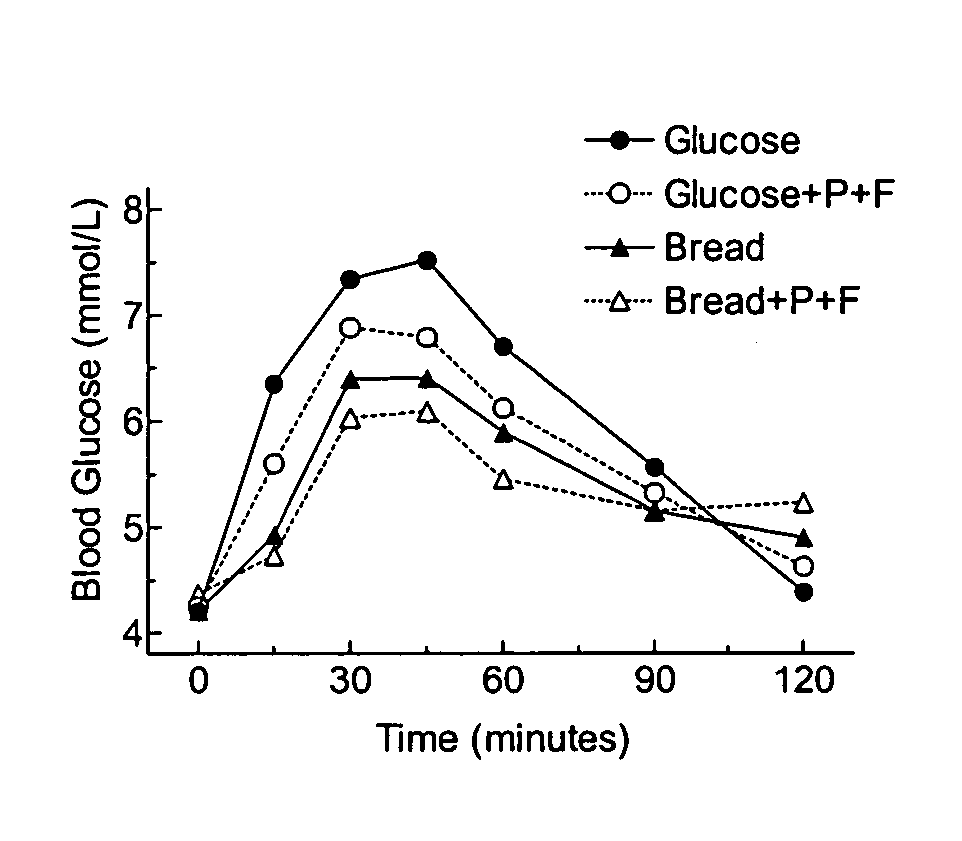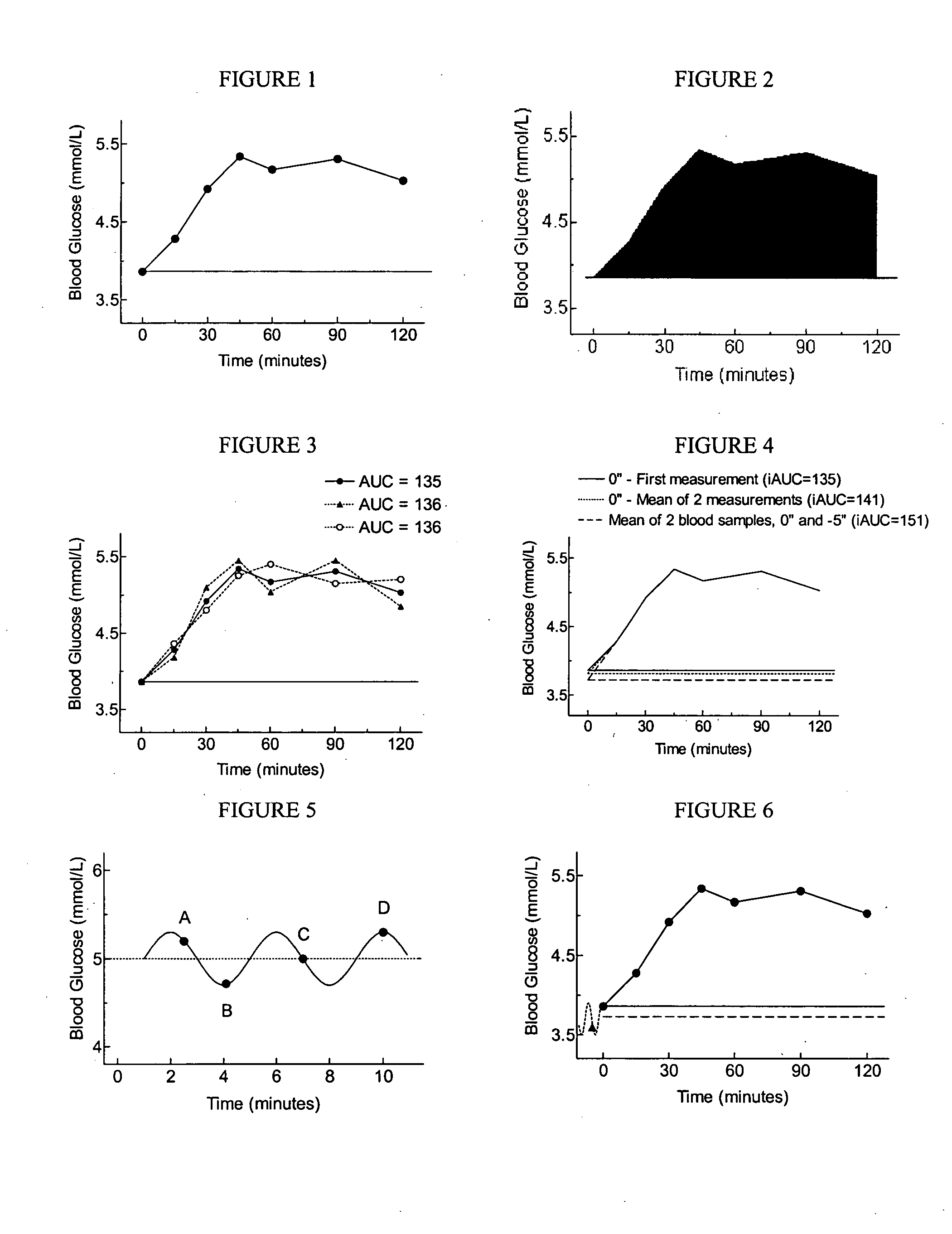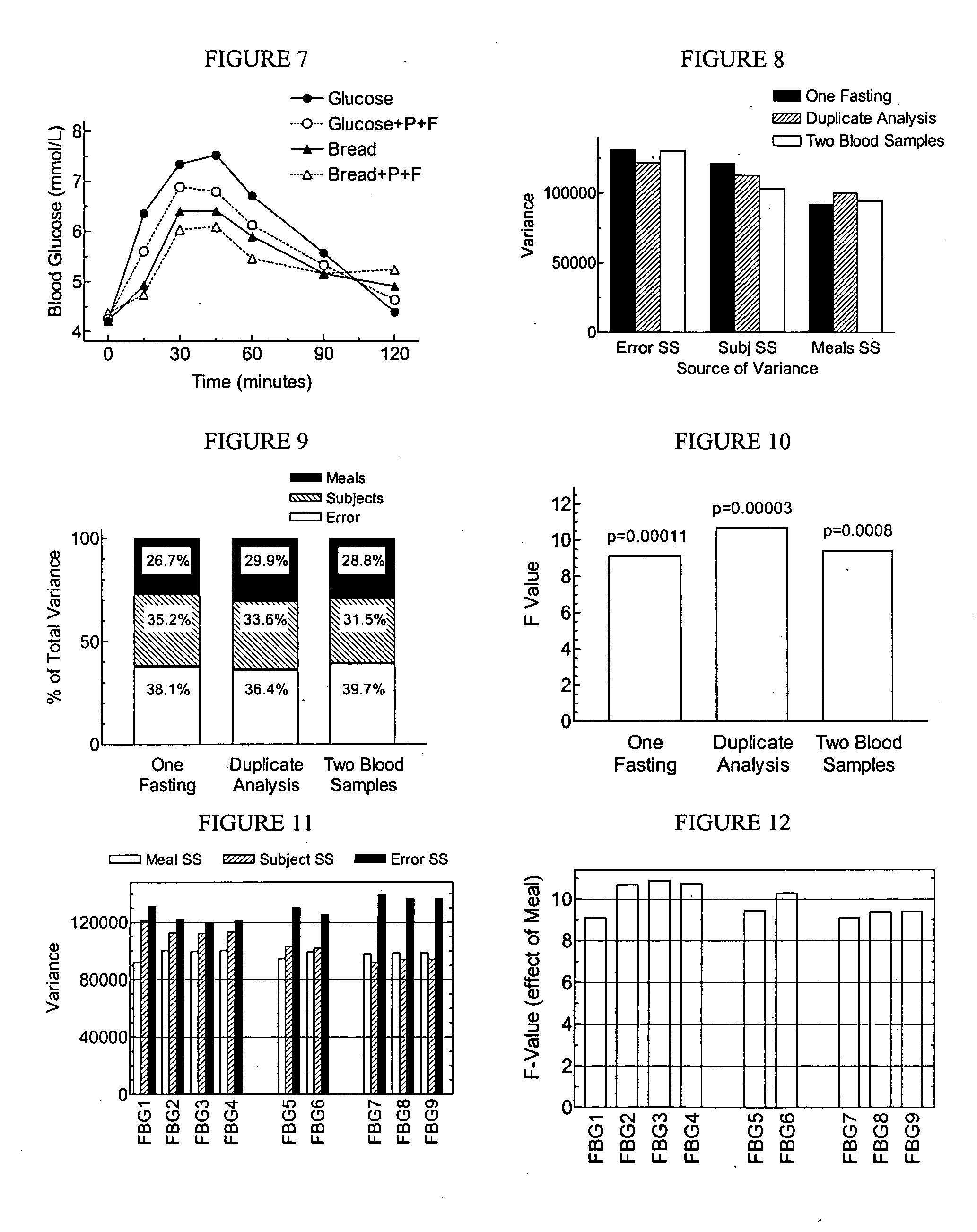Methods for determining glycemic responses of foods
a glycemic response and food technology, applied in the field of glycemic response determination of foods, can solve the problems of milk intolerance, incomplete or rapid glucose absorption, poor etc., to reduce the variation in analytical accuracy, improve the accuracy of fasting blood glucose estimation, and reduce the effect of minute-to-minute variation in blood glucos
- Summary
- Abstract
- Description
- Claims
- Application Information
AI Technical Summary
Benefits of technology
Problems solved by technology
Method used
Image
Examples
example # 1
EXAMPLE #1
Intra-Individual Variation of IAUC
[0057] Fourteen (14) normal subjects (Table 1) were studied on 4 occasions after overnight fasts. They consumed 4 different test meals consisting of either: 50 g glucose, 50 g glucose plus 10 g protein from soy protein concentrate plus 10 g fat from corn oil, a 50 g available carbohydrate portion of white bread, or a 50 g available portion of white bread plus 10 g protein from low fat cottage cheese plus 10 g fat from margarine.
[0058] Blood samples (2-3 drops) were taken by finger-stick. On each occasion, 2 fasting blood samples were taken separated by a 5 minute interval; these samples are termed −5 min and 0 min. As soon as possible after the second fasting blood sample, the subject started to eat one of the test meals and further blood samples were obtained 15, 30, 45, 60, 90 and 120 minutes after starting to eat. Glucose was analyzed using an automatic analyzer (Model 2300 STAT, Yellow Springs Instruments, Yellow Springs, Wis.). Bloo...
example # 2
EXAMPLE #2
Precision of Estimate of Relative Glucose Response
[0075] The data from example #1 can by used to calculate the iAUC elicited by white bread as a percentage of that elicited by glucose. Each subject's iAUC after white bread alone was expressed as a percentage of the same subject's response after glucose alone, and the mean, SEM, CV and 95% confidence interval of the resulting values shown in Table 3. Compared to iAUC calculated from a single measure of glucose in the 0 min blood sample (FBG1), duplicate analysis of glucose in the 0 min sample (FBG2) reduced the SEM, CV and 95% confidence interval, and these values were not reduced any further by triplicate analysis of glucose in this blood sample (FBG3 and FBG4). By contrast, the precision of the estimate of white bread relative glycemic response was actually reduced (ie. higher SEM, CV and 95% confidence interval) by taking the average of blood glucose at −5 min and 0 min (FBG5), and was even worse when glucose in the −5 ...
example # 3
EXAMPLE #3
Reducing Number of Subjects without Loss of Statistical Power
[0076] The data from example #1 can be used to show how duplicate analysis of fasting glucose allows for fewer subjects to be studied. Here, the F value for the main effect of test meal in 12 or 13 subjects is compared with the F value for all 14 subjects. The F value for all 14 subjects for iAUC values calculated using a single measure of glucose in the 0 min sample (usual method) was 9.11. Since there were 14 subjects, there are 14 different ways to obtain 13 subjects (removing each of the 14 subjects in turn, and calculating F for the remaining 13 subjects). When this is done for iAUC values calculated by the usual method, the resulting F value was less than 9.11 in 11 of the 14 (79%) cases. In other words, if only 13 subjects were used, there is about an 80% chance of obtaining a less significant result than using 14 subjects. However, if iAUC is calculated using the average of 2 measures of glucose in the 0...
PUM
| Property | Measurement | Unit |
|---|---|---|
| concentration | aaaaa | aaaaa |
| concentration | aaaaa | aaaaa |
| time | aaaaa | aaaaa |
Abstract
Description
Claims
Application Information
 Login to View More
Login to View More - R&D
- Intellectual Property
- Life Sciences
- Materials
- Tech Scout
- Unparalleled Data Quality
- Higher Quality Content
- 60% Fewer Hallucinations
Browse by: Latest US Patents, China's latest patents, Technical Efficacy Thesaurus, Application Domain, Technology Topic, Popular Technical Reports.
© 2025 PatSnap. All rights reserved.Legal|Privacy policy|Modern Slavery Act Transparency Statement|Sitemap|About US| Contact US: help@patsnap.com



